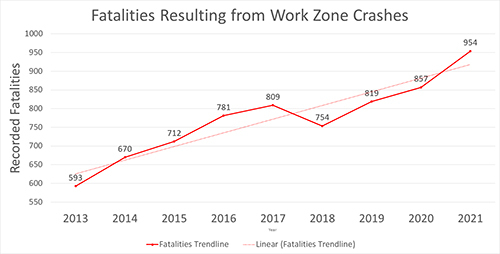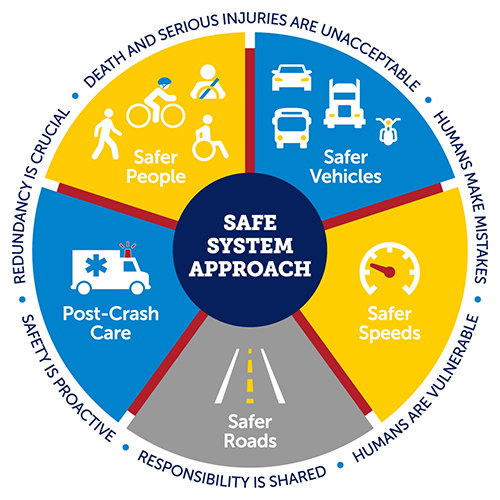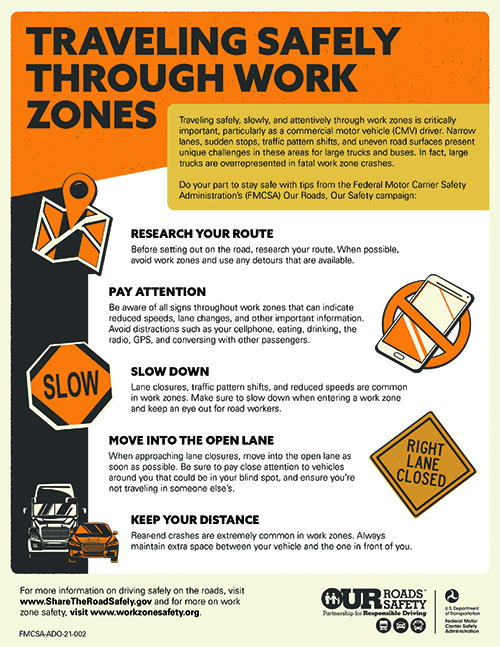Work Zone Safety
Work zone safety is not dependent on any one person. It is the combined effort of us all. It starts with elected officials influencing policies, including vehicle safety requirements, and automobile manufacturers who put those requirements into practice. It continues with the organizations and committees that create the standards by which transportation engineers design the specifications for the work zones used in roadway construction and rehabilitation. It continues with the contractor who implements the plans, law enforcement who participates and enforces work zone safety, and the construction team whose safety relies on the protection provided by the work zone.
Most importantly, work zone safety depends on the drivers using the roadways.
Why should "I" care? The reason is that studies show that automotive accidents are among the leading causes of death in the United States for people ages 1-54 per the CDC's WISQARSTM (Web-based Injury Statistics Query and Reporting System) and the trend is only increasing, from 2013 to 2021 there's been a 61% increase per Fatalities Data: NHTSA Fatality Analysis Reporting System (FARS) Encyclopedia.

Just in Oklahoma alone, from 2017 to 2022, 91 fatalities, 1,455 injuries, and more than 8,000 collisions occurred in Oklahoma work zones per Safety: It's Not Just About You; work zone safety impacts everyone (oklahoma.gov). The impact from these losses ripple through our community, state, and nation at every level.
These statistics require action, but where do we start?
Untrained drivers can be overwhelmed by work zones, finding them confusing and challenging to navigate. Studies have shown that proper safety awareness training lowers the number of accidents within work zones.
The great state of Oklahoma has taken a proactive approach to tackle work zone safety. As of November 1st, 2023, all teenage drivers must present a certificate of completion for an intermediate license Work Zone Safe | Work Zone Safe (teachable.com). Experienced drivers can benefit from this refresher course.

In addition to these new requirements for Oklahoma drivers, the Federal Highway Administration (FHWA) has championed the "Safe System Approach." One component of this approach is encouraging "Safer People" by implementing "education, outreach, engineering solutions, and enforcement to address persistent behavioral safety issues." The safety issues that are most frequently involved in fatal crashes are not wearing safety belts, driving while impaired from alcohol, and speeding.
I will leave you with the pdf provided by the Federal Motor Carrier Safety Administration (FMCSA) with work zone best practices. One of these best practices is always to pay attention to your surroundings and remember to buckle up. Safe travels.




